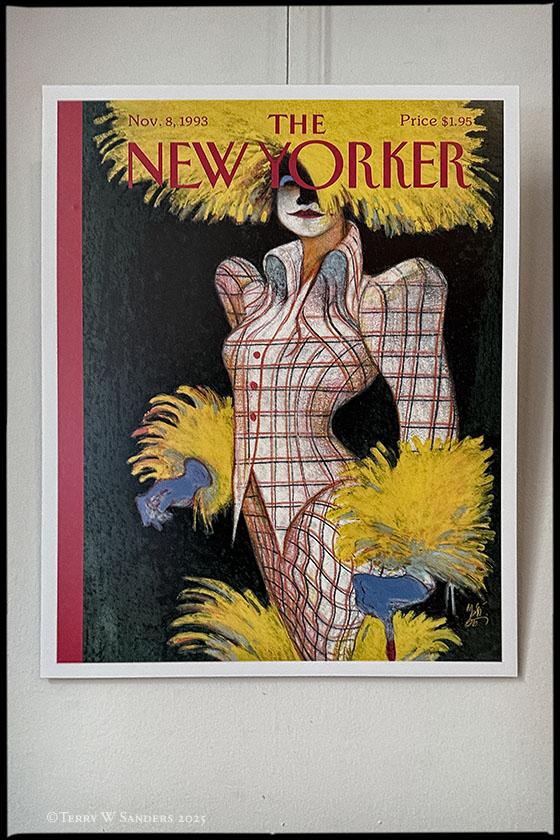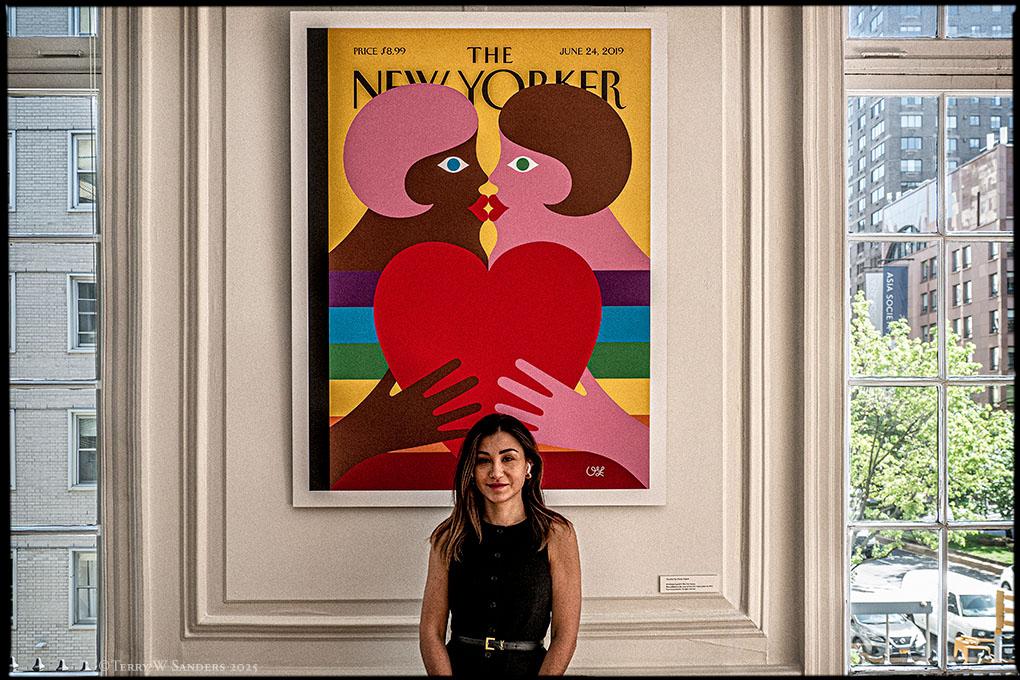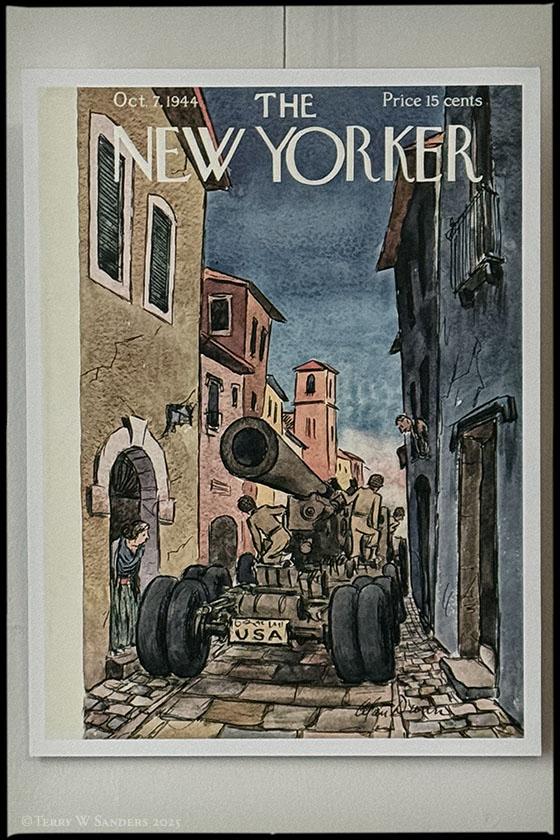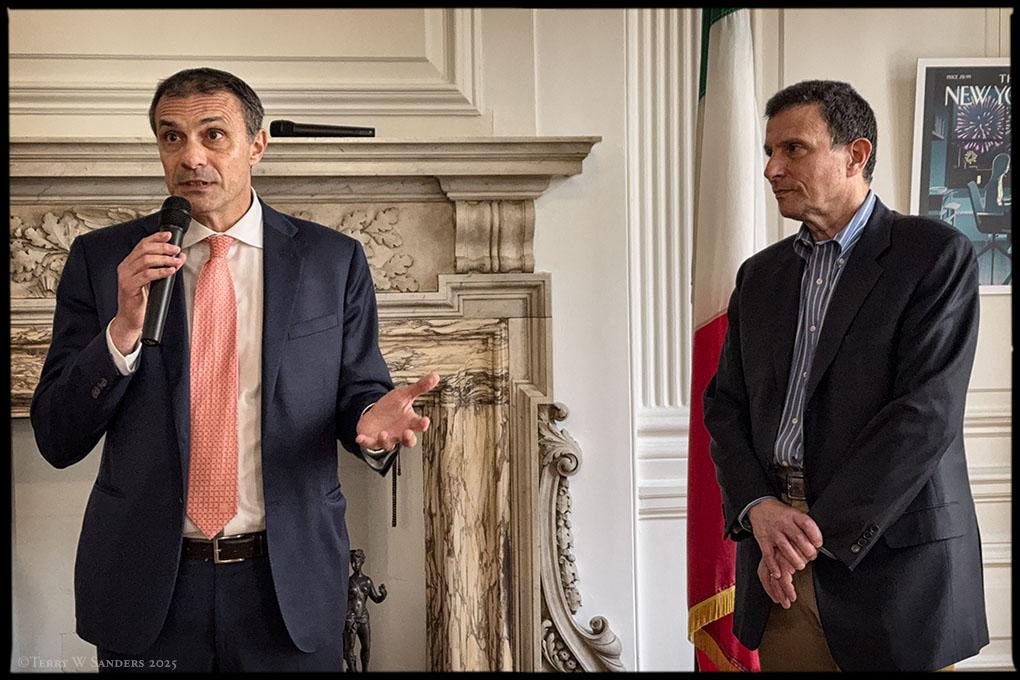The Italian Consulate in New York has opened the doors to “Italy and The New Yorker Across a Century” — a visual tribute to Italy as seen, imagined, evoked, or signed on the covers of the iconic American magazine across a hundred years of publishing history.
The covers of The New Yorker don’t chase headlines. They’re more like visual haikus—sometimes wry, sometimes wistful, always packed with narrative power, yet delivered without a single word. At the heart of the exhibition are works by Italian illustrator Lorenzo Mattotti, a long-time contributor to the magazine.
In Tuscany (August 2010), a car winds along a country road lined with cypresses. The colors are both vivid and restrained. It’s not about representing the landscape as it is—but how we remember it: a shared idea of Tuscany.

In Siesta (August 11, 2014), a woman lounges by a pool. Her dog lies nearby, the garden is lush, the light stands still. It’s summer in slow motion—private, serene, far from the noise. A quiet balance between rest and focus, something Mattotti captures with ease. Blizzard (January 2011), one of his rare city scenes, shows skiers gliding between snow-covered buildings. The setting feels dreamlike—more mood than map. It’s not a real place, but a way of seeing space.
With Vivienne Westwood, Paris Prêt-à-Porter (1993), the spotlight shifts to fashion. A female figure commands the scene, her body all gesture and presence. Theatrical, yes—but still grounded in Mattotti’s signature sense of restraint.
Other stories come into view too. Like a 1934 Venice illustrated by Constantin Alajalov: a gondola glides along the canal, an American couple relaxes, the gondolier sings.
Olimpia Zagnoli plays on a different register. Her women are smooth lines, bold colors, minimal gestures. In Heartfelt (2019), two figures kiss while holding a heart. In Cocomero (2023), a girl bites into a slice of watermelon. The pleasure is simple, but exact.

The New Yorker cover, June 24, 2019. Artwork by Olimpia Zagnoli. Photo by Terry W. Sanders.
In A New Leaf (2019), Anna Parini depicts a girl walking through snow, her nose in a book. She’s surrounded by city, but lost in her world—everything moves around her, she stays still. Ivan Brunetti’s Urban Bliss (2019) works in miniature. A child reads on a rooftop garden—an everyday act that quietly becomes a story.
The exhibition also features historic covers by American artists portraying Italy: June 25, 1966 by Charles Saxon, with a gondola weaving past Venetian buildings, and October 7, 1944 by Alan Dunn, showing an American tank rolling through a cobblestoned Italian village during wartime.

Back in 1925, a group of New York friends launched The New Yorker more or less on a whim. “They just wanted to have fun,” said editor David Remnick, who has led the magazine since 1998. “They ate at the same restaurants, played poker, got drunk. They had no idea what it would become. It was just a vibe.” What’s kept it alive is its gift for reinvention—especially through art. Much of that credit goes to Françoise Mouly, art director since 1993, who gave the magazine a truly global eye. “She spotted talent in Italy, France, Brazil—that’s what real diversity means.”

Photo by Terry W. Sanders, 2025
Consul General Fabrizio Di Michele emphasized how this exhibition honors a certain kind of visual journalism—curated, credible, and able to tell truths across borders. “It’s also a tribute to the deep bond between Italy and New York—two creative worlds that have always recognized each other. These covers are the proof: Italy seen from afar, dreamed, reimagined. That’s what makes the relationship between The New Yorker and its Italian audience so special.”











